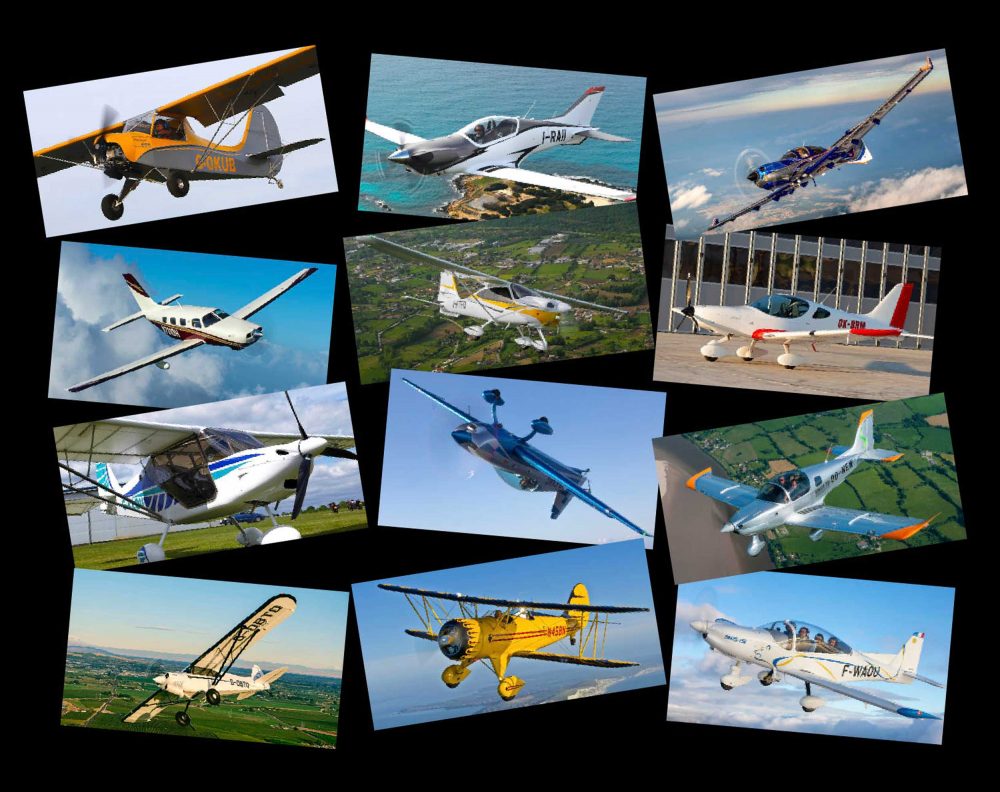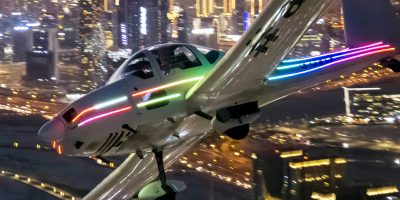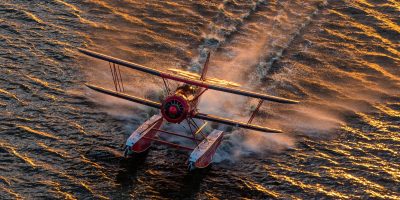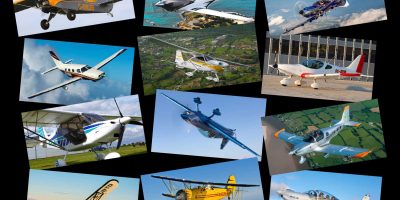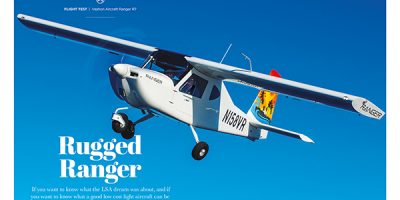FLYER Picks…New piston singles to buy and fly from £28k!
There’s some great choices in the world of single-engine piston aircraft that you can buy ready-to-fly here in the UK…
This not a definitive list, just the popular choices that pop up among the FLYER team when we talk about what catches our attention when looking at what’s available.
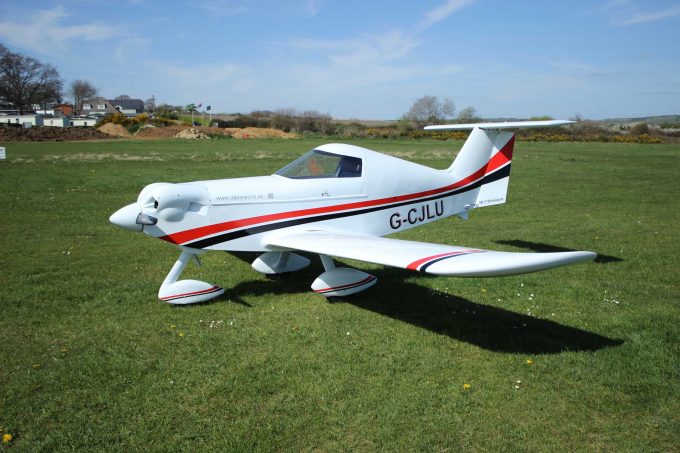
Spacek SD-1 Minisport
This remarkable little machine is proof that you don’t have to spend a fortune, in fact just a few quid under £28k inc VAT, to get a brand new aeroplane. Thanks to the SD-1 Minisport being a single-seat deregulated aircraft (SSDR), it’s also one that you can operate free of any regulation, and that you just need a microlight pilot’s licence and a medical to fly.
The Minisport is available with a choice of engines and can cruise at 90-100mph burning around 4.5 to 4.7litres of mogas per hour. When you consider that SD-1 has a fuel capacity of 35litres, that’s six hours of endurance! There’s a number of options, including tailwheel and tri-gear, and a BRS emergency whole aircraft parachute. Just one thing with this lightweight machine though, it’s got a maximum pilot weight of 105kg.
Due to it’s remarkable performance the SD-1 is has been flown to a number of wins in the FAI European Microlight Championships. http://sdplanes.co.uk/
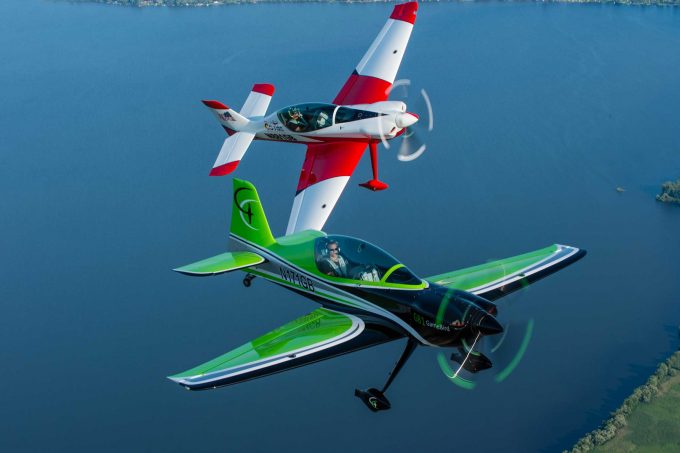
Game Composites GB-1 Gamebird
From the mind of gifted German aircraft designer Philipp Steinbach, created and tested in the UK, and now manufactured in the US, the Gamebird from Game Composites, gained its EASA Certification in May 2017.
An awesome all carbon-composite ultimate-level aerobatic aircraft, it’s good for +/- 10g, seats two in tandem, and can cruise at 200kt for a 1,000nm. Power is from a 303hp Lycoming.
FLYER’s US-columnist Dave Hirschman reckoned the GB1 is “…capable, versatile, and visually appealing, with the flexibility to accommodate many personal tastes. It can be graceful and smooth; forceful and rough; or it can span time zones traveling in a straight line.
All the while conveying an exacting sense of precision and ergonomic thoughtfulness in every aspect of the way it looks, feels, and flies. The GB1 can take you where you want to go, any way you want to get there.”
The base price of $425,000 includes 10 hours training. https://gamecomposites.com/

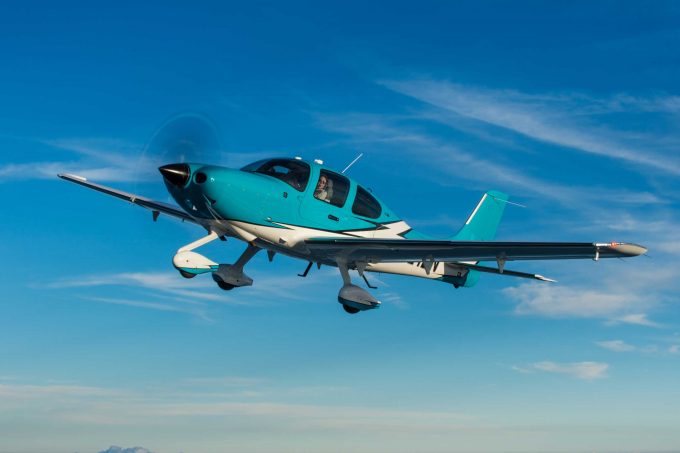
Cirrus Aircraft SR22T
In our opinion this is, by a significant margin, the best high performance single-engine piston aeroplane being built today. The SR22 first flew in 2000, and it’s been a story of continuous development since then, with the aeroplane getting better and better each and every year.
Although the turbocharged version has a max operating altitude of 25,000ft and a high speed cruise of 213kt, in my experience its sweet spot is about 180kt and in the high teens where you can sit all day. At this power setting you’ll be burning about 18usg/hr, so just over five hours to empty tanks / full bladder.
It’s impossible to talk about any Cirrus without mentioning the CAPS system that, when activated, deploys a whole airframe parachute system.
As I write this, it’s been deployed 104 times, resulting in 212 people returning to their families. I know some aren’t keen, but when you look at both the physics (much less energy to dissipate) and the results, like the aeroplane itself, it’s nothing less than outstanding.
Expect to pay over $1,000,000 for a new SR22T. https://cirrusaircraft.com/
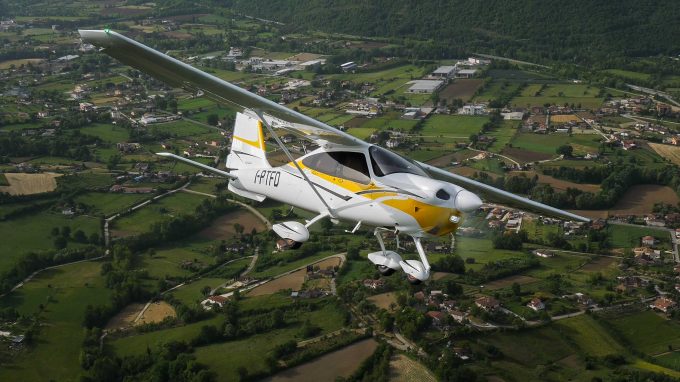
Tecnam P2010
If you are going to take a crack at the four-seat high-wing market, you’d better come up with something innovative if you want to have any chance against this C172-shaped gorilla.
Tecnam’s P2010 uses mixed materials (composite fuselage, metal wings), adds a third door (for entry into the rear cabin) and a choice of three engines.
There’s a 170hp Jet-A version, and IO-360 or IO-390 avgas versions offering 180hp or 215hp respectively.
Pick the Jet-A version for high altitude cruise where its turbocharger delivers, the IO-360 if you’ve eaten too many pies and need the useful load, or the IO-390 for those extra cubic inches and hp. If you plan for an average cruise of 120kt at normal UK GA levels you won’t be too far out.
The cabin is comfortable, the extra door handy and the panel G1000NXi equipped. Prices are lower than the equivalent primate. https://www.tecnam.com/aircraft/p2010-180hp/
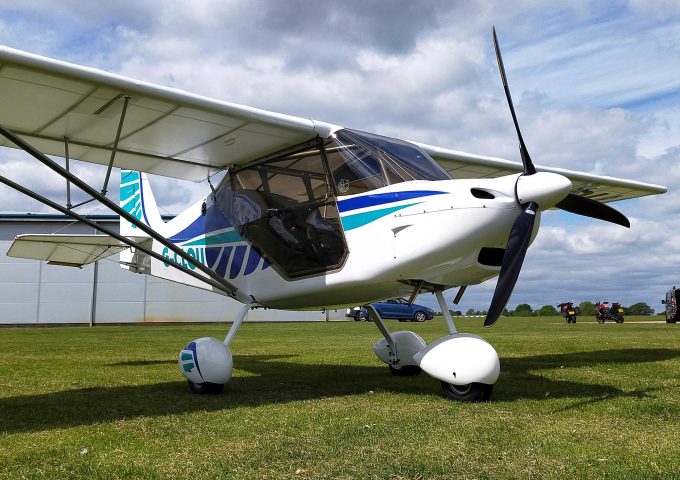
Flylight Skyranger Nynja
An aircraft made in Britain! Yes, Sywell-based Flylight Airsports has gained A8-1 manufacturer status and supplies the Skyranger Nynja (and its cheaper sibling, the Swift) as a factory-built microlight or as a kit.
The Skyranger is a simple, tough aeroplane with surprisingly roomy cockpit and side-by-side seating. It has a central stick and uniquely French throttles that look suspiciously like the gear lever on a 2CV.
The Nynja is the latest derivative with considerably improved aerodynamics and a skin of beautifully finished glass fibre panels replacing the fabric of earlier aircraft.
It’s available with 80hp or 100hp Rotax 912 engines giving excellent performance, and a choice of standard steam gauges or glass cockpit alternative at added cost. Which brings us to the price.
The standard Skyranger Nynja, with 100hp Rotax 912ULS and analogue instruments is £50,940 incl VAT. That’s a brand new two-seat aeroplane for £50k! http://www.skyranger.co.uk/en/
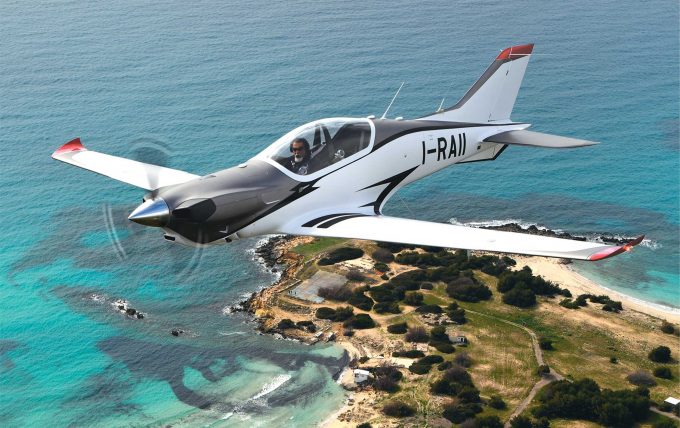
Blackshape BK160 Gabriél
Italian aerospace company Blackshape had UK pilots lusting with their beautiful Prime, a Rotax 912-powered, carbon fibre reinforced epoxy (CFRP) tandem two-seater, which never quite got the certification required to be operated in the UK. But in 2017 at AERO in Germany, the announcement of the BK160 Gabriél, which had just received its EASA CS-VLA (Very Light Aeroplanes) certification, made it possible this beautiful, low-wing retractable could finally be purchased and flown here in the UK.
Powered by a 160hp Lycoming IO-320, the Gabriél promises a max cruise speed of 148kt, a 250m take-off roll, landing roll 190m and max rate of climb 1,550ft/min.
Max take-off weight is 750kg but useful load is just 220kg. With two 80kg people on board, that leaves 60kg for fuel (84litres out of a 114 litre fuel tank capacity), which is just over two hours’ flight time. The last time we heard a starting price, it was from €275,000.
In a world of ‘cookie-cutter’ Rotax-powered two-seaters, the Gabriél cuts a striking figure, and you’d be sure to create a crowd wherever you went with one. https://blackshapeaircraft.com/en/gabriel/
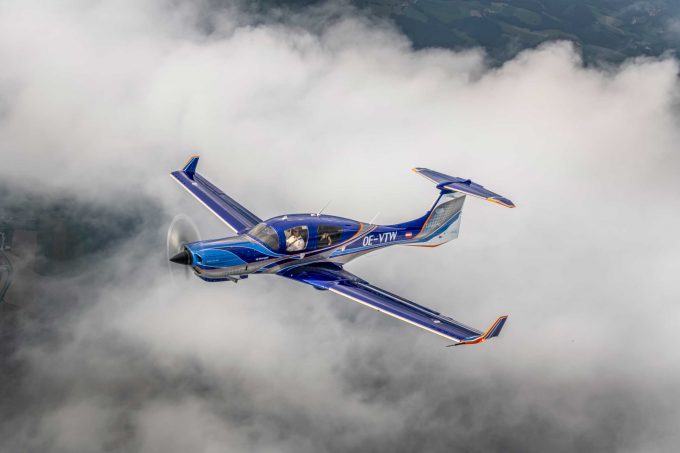
Diamond Aircraft DA50RG
Diamond has been developing a big single for quite a few years. We knew there’d been experiments with various engines (having flown a couple of them) and we’d heard rumours of potential features like partial pressurisation and retractable gear, but it wasn’t until 2019 that the final configuration was made public.
The DA50 RG would be powered by a 300hp CD300 Jet-A, have retractable gear and 44ft wingspan. Certified in 2020 the DA50 delivers five seats, 181kt, a 20,000ft service ceiling and a range of 750nm, although it doesn’t deliver them all at the same time.
Sharing its fuselage with the DA62 twin, the DA50 RG’s interior is both spacious and luxuriously finished. It has the potential to be a brilliant long distance tourer, particularly given the universal availability of jet fuel and the increasing scarcity of avgas in some parts of the world. https://www.diamondaircraft.com/en/private-pilots/aircraft/da50/overview/
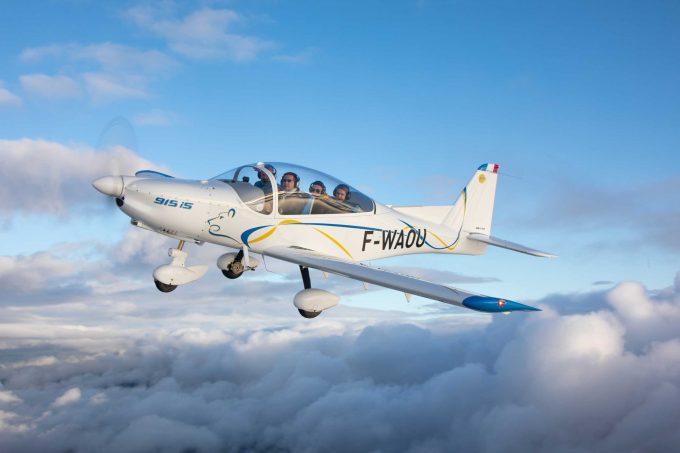
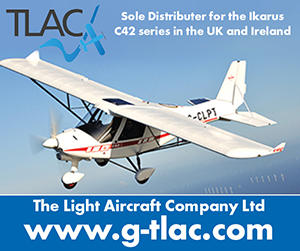
APM Simba
For a ‘lion’ the APM Simba from Issoire Aviation has a rather understated roar – 71.5db at max take-off weight to be precise. That’s thanks to the 141hp Rotax 915iS that powers this small, but really rather capable four-seater built in France.
Pioneers of composite structures – they certified an carbon airframe before Boeing managed to do the same with the Dreamliner – Issoire’s light and efficient Simba was the first EASA-certified four-seater to use the 915iS.
That combination brings a 460kg useful load, that’s complemented by a 147kt cruise at 36l/h and a maximum range of 900nm.
Superb visibility thanks to an enormous sliding canopy make the cabin a great to be for the three passengers, while the pilot will enjoy well-harmonised handling and a well-equipped panel featuring Garmin G3X Touch.
Expect to pay around €300,000 by the time you’ve added some optional avionics. https://www.issoire-aviation.fr/nos-avions-en.php
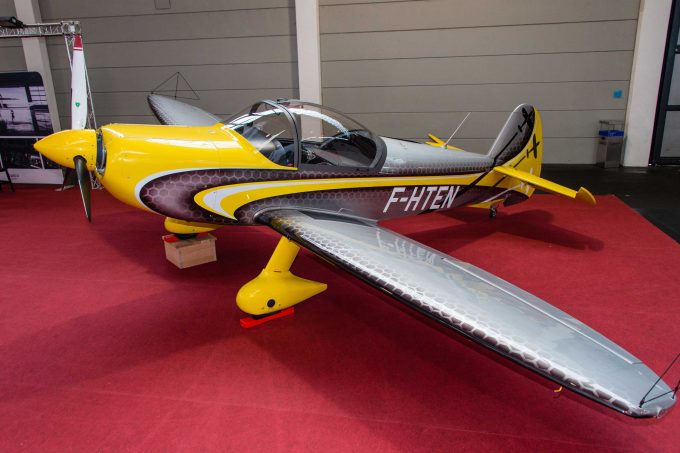
Cap10C NG
Yes, the CAP 10 is a +6/-4 g aerobatic two-seater but it’s also one of the nicest aircraft to fly cross-country you could wish for.
You sit in a civilised cockpit, side by side with your passenger under a large sliding bubble canopy, with plenty of room for pilot stuff, a control stick each, and comfortable sports seats that look like something straight out of a classic English sports car.
And the controls are heavenly, moving with an ease and precision that flatters any pilot.
The original CAP 10s were built by Mudry which is now part of CEAPR in Darois, France – Robin Aircraft is also in its portfolio.
The latest version is the CAP 10C NG, launched at the 2019 AERO Friedrichshafen show. It’s still made of wood with a carbon fibre wing spar, and uses a 180hp fuel-injected Lycoming with a two-blade Hoffmann propeller as standard.
The NG updates include a revised instrument panel including Garmin G5 instruments, plus electric trim and flaps. A carbon fibre cowling and a three-blade MT constant-speed prop (it would be hard to resist the latter!) are now options.
The price is €303,000 plus VAT. https://www.mistralaviation.co.uk/The_Robin_Aircraft_range/Robin_CAP_aerobatic_aircraft/
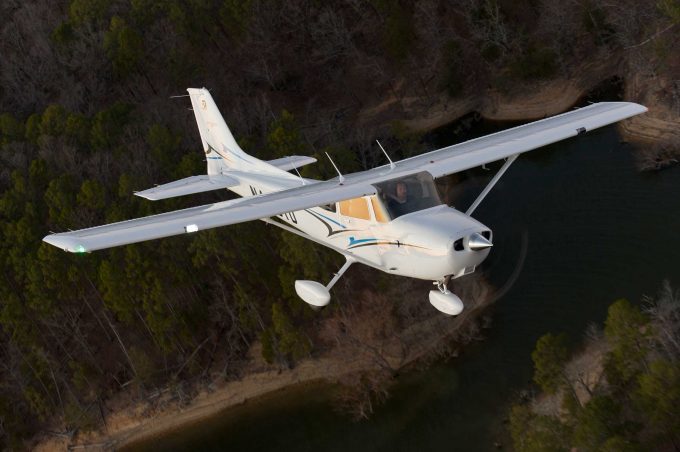
Cessna 172 Skyhawk
There can’t be that many pilots who’ve not flown a C172, can there? Introduced in 1956, the four-seat high-wing single is still selling in significant numbers to flight training schools, where alongside the venerable PA28, it forms the backbone of the world’s training fleet.
The Skyhawk isn’t just about training. A comfortable and relatively spacious leather-clad interior, G1000NXi avionics and a 180hp injected Lycoming combine to bring simple, solid and safe touring (expect something in the region of 110kt-120kt) with a comfortable zero wind range of about 550nm.
Should you decide to take it far and wide, pretty much any maintenance shop will be familiar with the type.
Handling is reassuringly solid and predictable, and at lighter weights in skilled hands the C172 is a very good strip and grass runway aeroplane too.
Depending on options, expect to pay north of $400,000 for what is a brilliant and clearly very well sorted aeroplane. https://cessna.txtav.com/
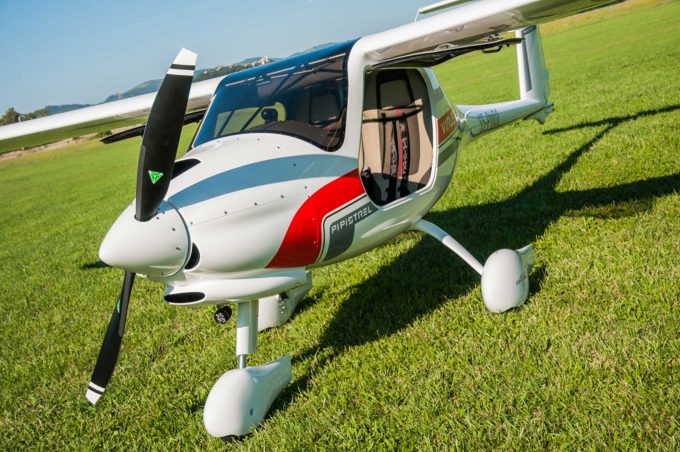
Pipstrel SW121 Virus
Yes, we all know that it’s a silly name (especially now), and no I have no idea where it came from or why they don’t have a hasty re-brand, but to get caught up with the name would be to miss a gem of a composite aeroplane that’s been lovingly hand crafted to an exceptional finish.
In SW (short-wing) guise the Virus can be comfortable tourer, trainer (intentional spinning IS approved), glider tug or just a fine flying bimbling machine.
Powered by a 100hp Rotax engine, the Virus comes complete with a fully feathering prop and airbrake, so should you fancy a bit of engine-off thermalling fun, just shut the engine down, feather the prop and away you go. You can even swap out the wing’s outer sections to increase the span if soaring performance is your thing.
There’s plenty of space inside (although some find the carry through spar in the roof can be a bit intrusive), but this is a truly modern two-seater from one of the most innovative companies in the business. https://www.pipistrel-aircraft.com/
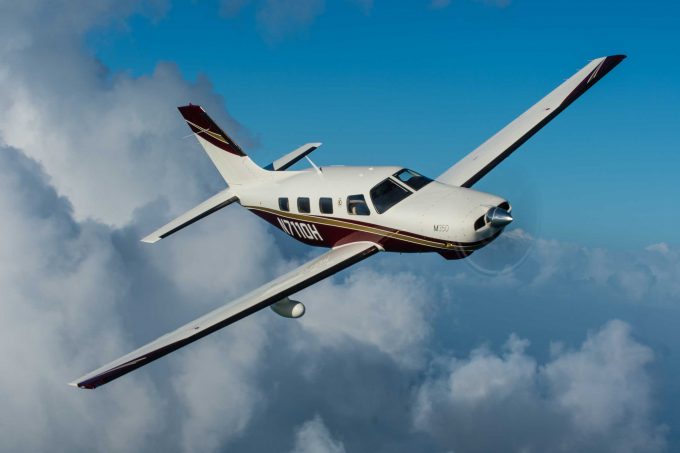
Piper Aircraft M350
If you are looking for the next level of capability in a piston single, you’ll be wanting a cabin-class pressurised aeroplane, and the only new aeroplane that fits that bill is Piper’s M350, the baby of the PA46 range.
Powered by a 350hp turbocharged Lycoming, the M350 has a maximum cruise speed of 213kt and a ceiling of 25,000ft.
With a range of up to 1300nm (depending on weights and power settings) the M350 really is an aeroplane that delivers on long distance comfortable and pressurised trips.
As you’d expect with almost all new aeroplanes, the Piper has Garmin’s G1000NXi, but in the M350 you get three screens rather than the more common two.
If the M350 is your gateway drug to pressurised comfort, the next steps on your PA46 journey will see the piston replaced by a Pratt and Whitney PT-6, which you’ll find in both the M500 and M600 models.
Expect to pay from $1.21M for a new M350. https://www.piper.com/
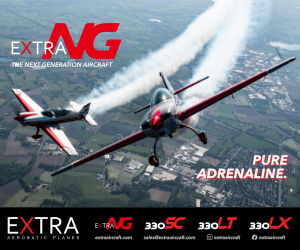
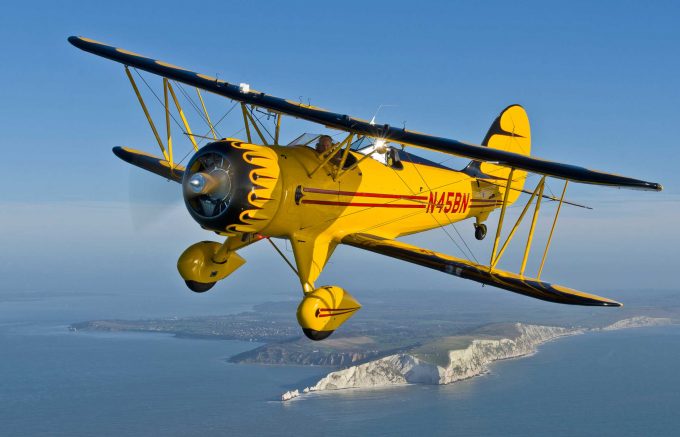
Waco Aircraft YMF-5
There’s no point in pretending that this is a practical aircraft, it’s not. The YMF-5 is about pure indulgent fun, and it delivers that ‘biggly’ – as they probably say in the Battle Creek Michigan factory.
This is one big open-cockpit aeroplane, and if you choose to fit amphibious floats it’s even bigglier, in fact it’s so big that there’s room for two in the front ‘hole’.
Powered by a Jacobs 300hp radial you’ll get that Golden Age traditional design, great craftsmanship (it takes something like 6,000 hours to build a YMF-5) and modern avionics (you can have an IFR glass panel if you choose).
Cruise speed is about 115kt and the Jacobs burns 14usg/hr so if you top off the 46 gallon tank in the upper wing you’ll want to be thinking about landing after a maybe couple of hours, but before you do there’s the option of some aeros with the aeroplane having G limits of +5.2/-2.1. https://www.wacoaircraft.com/
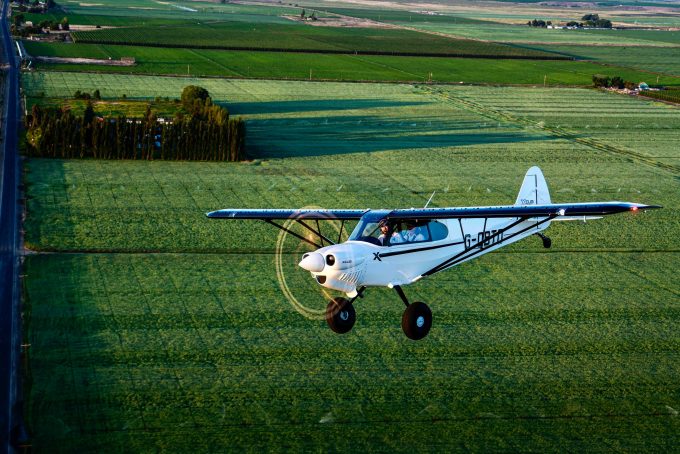
CubCrafters XCub
Having refined the Super Cub concept with its work on the TopCub, and Carbon Cub kitplane/LSA, CubCrafters perfected the Cub platform with the XCub.
Introduced in 2016 after six years of secret development, XCub was announced as a ready-to-go, fully certified aeroplane.
The Super Cub was never much of a cruising aeroplane, but through airframe refinement XCub still delivers all the low-speed handling capability but with a 126kt cruise at 75% power. With a 180hp Lycoming driving a Hartzell Trailblazer constant-speed prop, take-off and landing distances are under 60m, and rate of climb is 1,500fpm.
You’ll notice drag-reducing details, from aileron cables inside the lift struts to a single piece aluminium undercarriage.
A modern interior brings comfort, plenty of storage and plenty of high-tech panel options. Prices start from $333k, but trust us, the options list is very tempting… http://cubcrafters.com/xcub
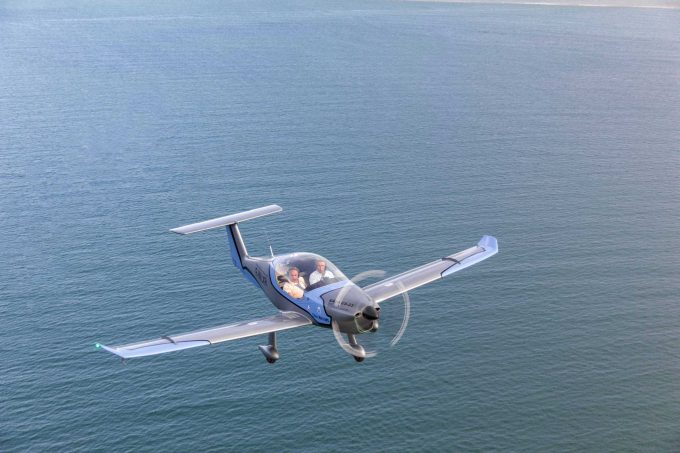
Elixir Aircraft Elixir
The two-seat Elixir is a clean-sheet design that uses OneShot carbon fibre manufacturing technology pioneered in the yachting industry. That tech means the basic airframe can be made from just eight parts, which Elixir says makes for lower costs. The aircraft is also EASA CS-23 VFR certified.
Powered by a 100hp Rotax 912iS with a variable pitch propeller, Elixir claim operating costs of €40-45 per hour, which covers maintenance and fuel over 2,000 hours use, up to the engine TBO.
The spec includes Garmin G3X Touch avionics, as well as a BRS emergency whole aircraft parachute, and even electrically adjustable rudder pedals as standard
Cruise speed is 130kt at 75% power setting, with an endurance of six hours. Stall speed is 45kt, Vne 157kt. Max take-off weight is 544kg.
A more powerful version fitted with a 141hp Rotax 915iS is in the works, along with an IFR version and a glider tug.
Basic price for the Elixir starts from €235,000. https://elixir-aircraft.com/en/
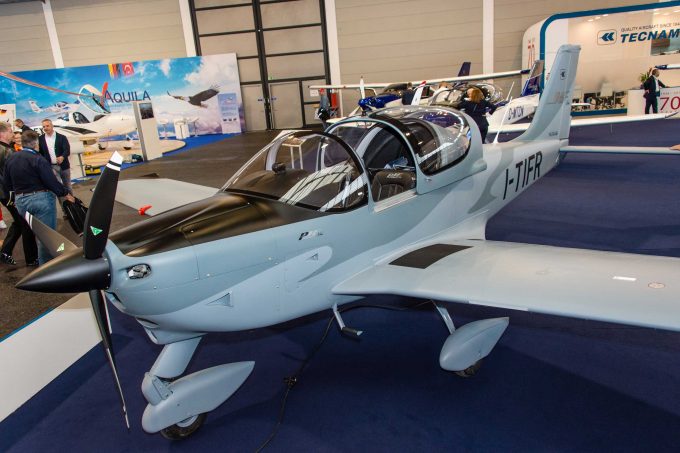
Tecnam P2002JF
It can be hard to keep up with the Tecnam range, but the P2002JF has been one of the highlights for a while.
The low-wing, two-seat, all-metal aeroplane is powered by the ubiquitous 100hp Rotax 912 which delivers a comfortable 110kt cruise (you can go faster, but I always think the 912 sounds a bit frenetic at high rpm).
You’ll be off the ground in under 150m and while the book talks of a 336m landing distance, most landings will take up considerably less with a hint of wind and a nailed approach speed.
The 100 litre fuel tank is enough for anyone’s bladder (over five hours), and visibility is pretty good thanks to a fair amount of perspex.
The P2002JF is one of those aircraft that’s not brilliant at any one thing, but that nicely combines individual strengths into a very accomplished and developed package. There’s even an IFR version (for the US market only). https://www.tecnam.com/aircraft/p2002/
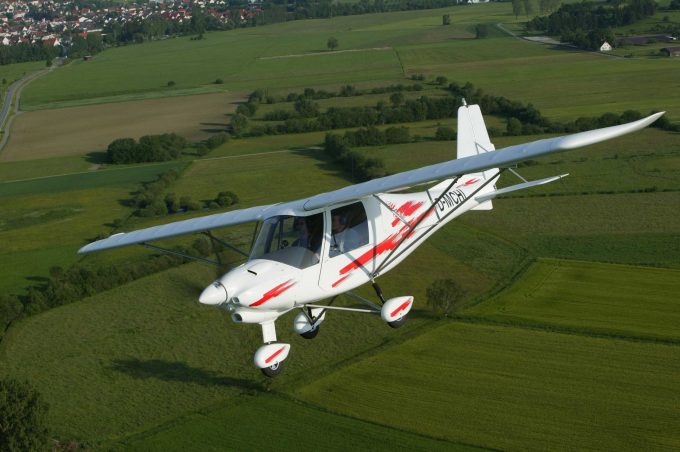
Comco Ikarus C42
The German-made C42 is beloved by microlight flight schools across Europe. It’s a tough little two-seater that’s an absolute cinch to fly, surprisingly comfortable with great manners, beautifully made and well-equipped (includes a Ballistic Recovery System). A big plus is that it handles grass strips with ease.
Up front there’s a choice of 80hp or 100hp Rotax engines although there’s very little difference in performance – the 100hp gives a slightly shorter take-off roll.
Expect a cruise speed of around 90kt and fuel burn of 10-14 litres per hour.
There’s a central stick, so if you’re flying from the left seat it’s in your right hand. Slightly confusingly, the throttle is a knob between your legs which moves up and down.
Let’s just leave that phrase there… The flap lever is on the roof, reached with your right hand if you’re in the left seat. Hang on, isn’t your right hand on the stick… https://www.g-tlac.com/comco-ikarus-c42/
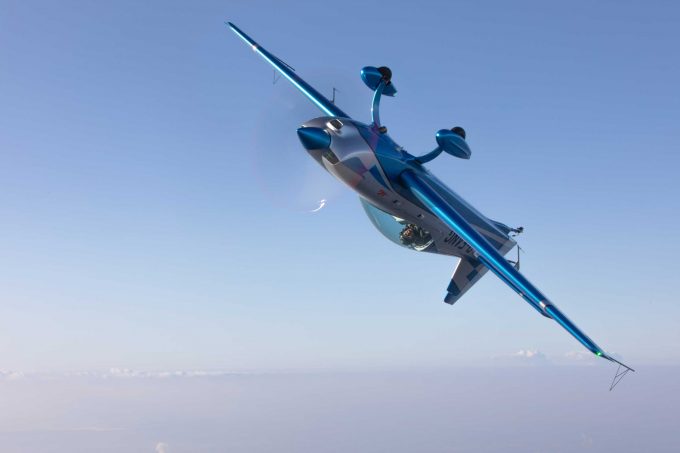
Extra Aircraft Extra NG
In the 2019 World Aerobatic Championships, in the top unlimited class, 32 out of the top 35 competing aircraft were from Extra, with the top four all flying an Extra 330SC.
That was the conventional Extra design with an immensely strong carbon fibre wing spar and a steel tube frame, clad in aluminium and carbon fibre panels.
So why would company boss Walter Extra redesign the aircraft to an all-new all-composite construction with the Extra NG (New Generation)?
Extra has kept all the original’s attributes – razor-sharp handling, startling performance and brilliant powers of recovery – but added comfort, better ergonomics, latest avionics and improved the aerodynamics with the NG.
It delivers! Load limits are +/-10g, manoeuvring speed 158kt, max cruise 202kt. The 635kg airframe is powered by a 315hp 6-cyl fuel-injected Lycoming giving enormous power-to-weight.
No shortage of thrills in this $450,000 aircraft… World Championships? That’s down to you… https://www.extraaircraft.com/
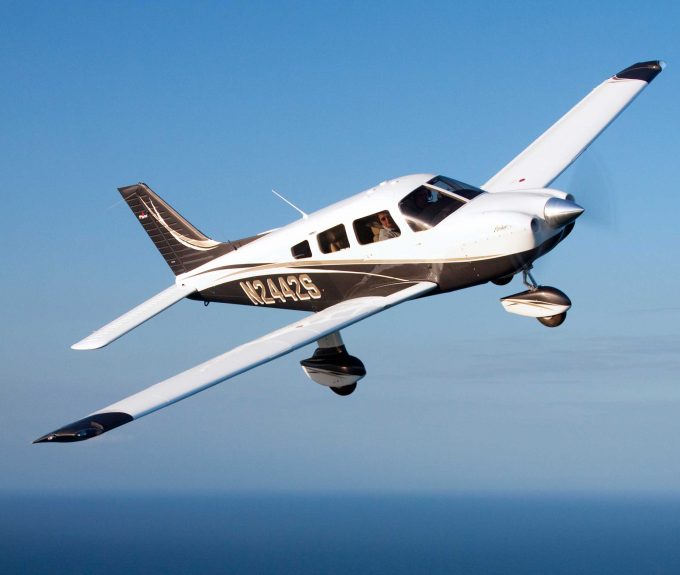
Piper Aircraft Archer LX
The Piper Archer is exactly what a lot of people want: an aircraft that flies easily with predictable handling, a proven record of safe operations and no big maintenance surprises. For these reasons, the PA-28 series is a staple of flight schools and club fleets as well as group ownership.
Current version is the Archer LX at a base price of $422,350, with a 180hp Lycoming engine, Garmin G1000 NXi glass cockpit with twin screens and G5 backup, and leather upholstery.
The DLX version with a 155hp Continental diesel engine costs $475,500 for similar spec. A bunch of extra cost options includes autopilot, terrain awareness, synthetic vision, air con and Amsafe airbag seatbelts.
Performance is very similar with a max cruise speed of 128ktas for the LX, 123ktas DLX. While the diesel gives more range, 848nm over the LX’s 522nm, it’s also heavier which reduces payload by 35kg. https://www.piper.com/
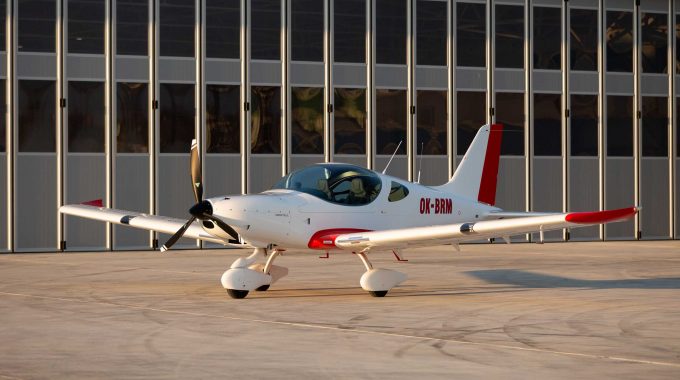
BRM Aero Bristell B23
Czech light aircraft maker Bristell launched their B23 aircraft last year with a full type certificate from EASA under the new CS-23 airworthiness regulations.
The B23 is a major step up for Bristell. With an empty weight around 435kg, maximum take-off weight of 750kg, and a full 120 litres of fuel – that’s 91kg – you still have 224kg for people.
To meet the CS-23 requirements the airframe was reworked including changes to the wing, a longer fuselage and a bigger tail for enhanced stability.
The B23 also fulfills Bristell’s other criteria: to be able to fly night VFR, to have a ballistic emergency whole aircraft parachute, and to burn mogas, rather than avgas.
For that, Bristell has stuck with the proven and certified 100hp Rotax 912S3 engine fitted with a constant-speed three-blade MTV prop. Base price of the aircraft is €199,000. https://www.bristell.com/
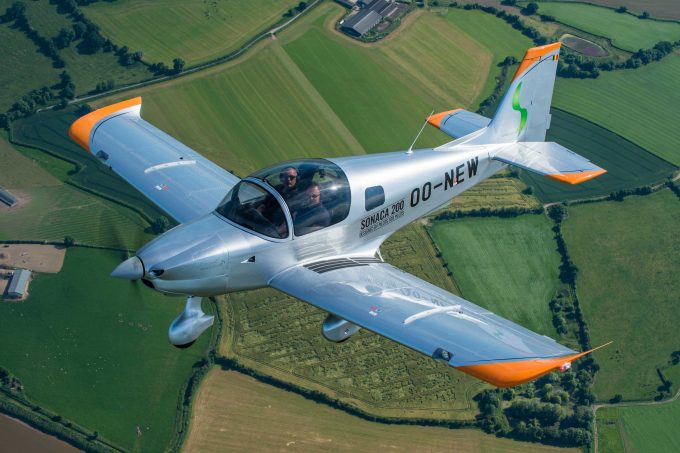
Sonaca 200
There’s no easy way of saying this, but some of the new two-seat offerings ‘enjoy’ a fairly lightweight construction, so while they’re perfectly sound structurally, their ability to endure a stream of PPL students is often not so good.
Not so the Sonaca, with its 750kg MAUW this aeroplane has all the makings of a modern classic: nice handling, tough undercarriage, tough interior, nosewheel steering, 115hp Rotax 914 turbocharged engine and a great cockpit environment that should make both teaching and touring a comfortable experience, particularly as it boasts a 750nm range thanks to its generous 140l fuel capacity.
All of that is backed by the Belgian aerospace giant with an 80-year history, and all of the big names in commercial aviation as customers (Sonaca even assembled 160 F16s for the Belgian Airforce!).
The Sonaca 200 is certified under CS-VLA which means it can also be used for VFR at night. Expect to pay somewhere north of €180,000. https://www.sonaca-aircraft.com/
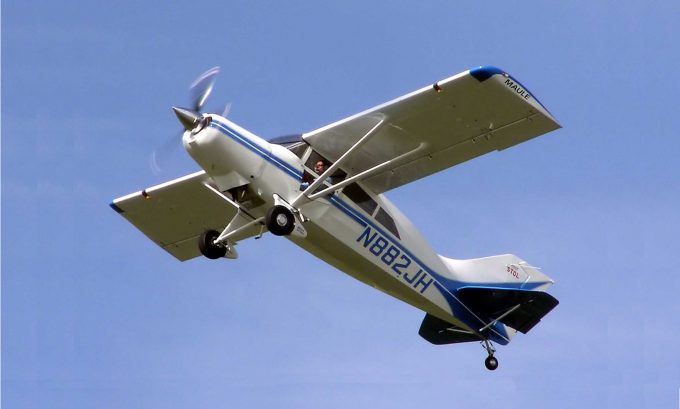
Maule Aircraft M7
If you are looking for a STOL aeroplane capable of operating in rugged terrain with four (or even five at a push) seats, there’s a good chance that you’ll be filling your hangar with a Maule M-7.
Available as either a taildragger (looks great, and like it’s ready to take on the backcountry) or with a nosewheel (looks awful), this really is an aeroplane you can load up and use in places where you would be very hesitant to take many others.
Lightly loaded the M-7 is capable of leaving the ground in less than 100m and landing in under 300m, probably less if the approaches are clear.
Powered by either a 235 or 260hp Lycoming it can be a bit thirsty, and at low speeds the aileron response might be thought of as vague (fit some aftermarket VGs), but for four seat value for money and STOL performance it’s hard to beat.
If you have a hankering for more power, Maule can offer you a version with 450hp Rolls-Royce turbine… https://mauleairinc.com/
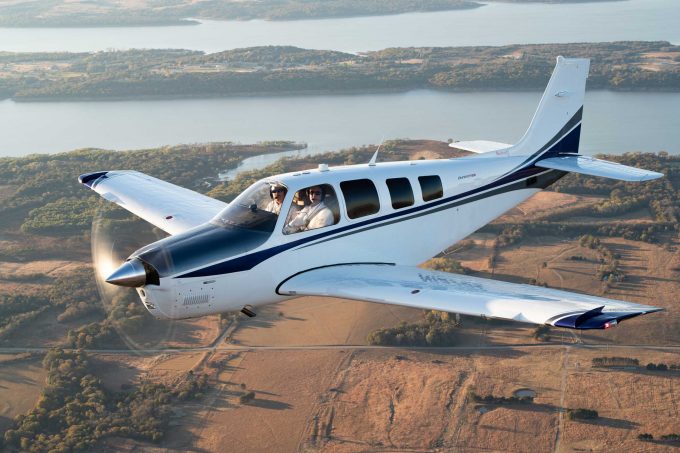
Beechcraft G36 Bonanza
They’ve been building Bonanzas continuously for 67 years – that’s the longest production run of any aeroplane.
Anywhere. Ever. But don’t be fooled, a new G36 is certainly not an aeroplane that’s stuck in the past.
The tough six-seat aeroplane combines comfort (the rear cabin is in club configuration) with speed (plan on cruising between 150kt and 176kt depending on how high you want to go and how much fuel you want to burn) and modern technology (the G36 is equipped with Garmin’s G1000NXi and its class leading GFC700 autopilot).
All of that comes in a traditionally manufactured package that brings versatility and fine handling along for the ride. If touring in comfort is your thing, the Bonanza fills the brief in spades, particularly if there’s only four of you.
If you are buying new (and there’s a waiting list!), this kind of capability comes at a price, and in the case of the G36 we’re talking a cool million dollars! https://beechcraft.txtav.com/
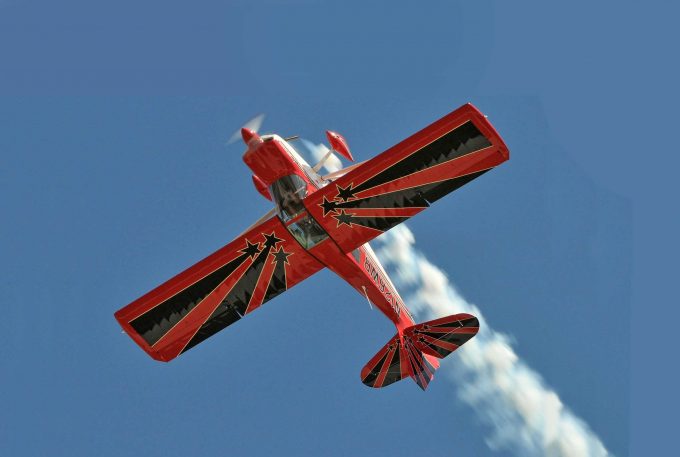
ACA Super Decathlon
There are some aeroplanes that are absolutely brilliant all-rounders, you know, the ones that do a little bit of everything well all in one package.
The Super Decathlon is one of those aircraft, so if you’re looking to tick lots of boxes, then the Super Decathlon should be high up on your list of choices.
Standard level aerobatics (+6, -5g) with inverted fuel and oil systems? Yup. Two-seat touring with cruise speeds in the 120kt range? Yup. In and out of all but the shortest grass strips with ease? Yup. All of this plus pleasant handling in a tandem configuration with sticks and a view from the front seat that barely qualifies it as a taildragger when manoeuvring on the ground.
The base price is $272,000, and you are going to want to spend a bit more than that (I’d suggest adding an AI if you are going to do any touring), but it’s a very capable and versatile aeroplane that’ll keep you amused whatever floats your flying boat on any particular day. https://www.americanchampionaircraft.com/

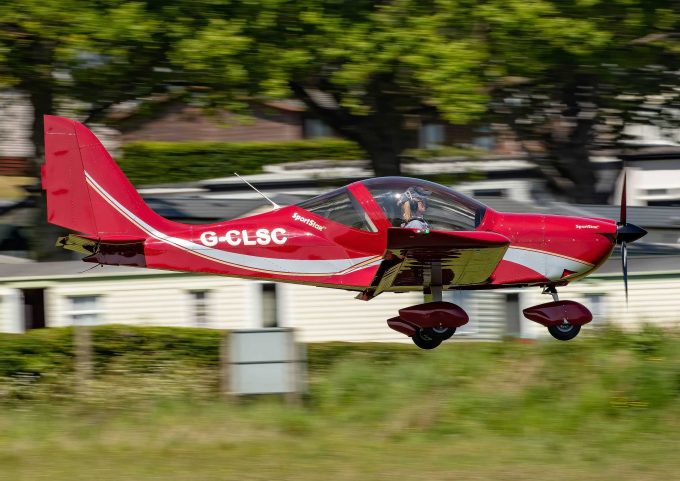
Evektor Sportstar SLM
If you are looking for an aeroplane capable of delivering huge amounts of flying fun and ridiculously low running costs then the SportSTAR should definitely have a place on your shortlist.
This is another low-wing, two-seat, all-metal aircraft that’s powered by the 100hp Rotax 912iS or 912ULS so cruise speed is 100kt+, fuel capacity is 120 litres (so think a maximum of about 10 hours before refuelling).
The light weight and low stall speed (40kt) means this deceptively tough aeroplane will get in and out of pretty much any UK strip if well-flown.
The big bubble canopy gives great views, and there’s enough 25kg baggage space for (most people) for a week away.
If you want to know what the younger brother Eurostar aeroplane is really capable of, check out any of Paul Kiddell’s flying adventures in FLYER. I know three people who have owned and sold Eurostars, and every one of them regrets selling! http://www.sportstaraviation.co.uk/home.html
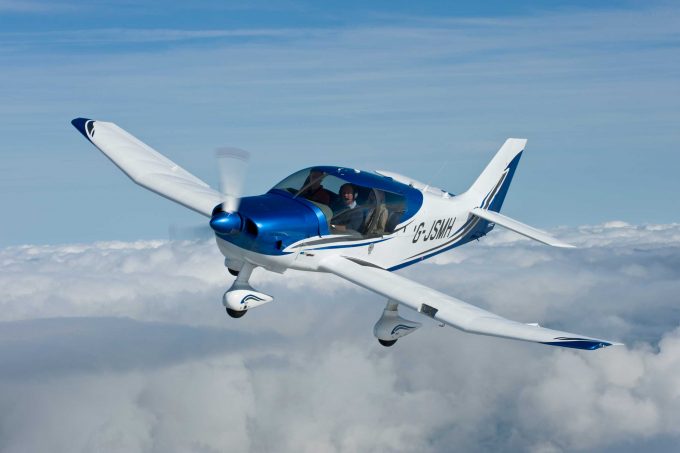
Robin Aircraft DR401 Jet-A
The cranked wing wooden wonder aircraft from France is, by several nautical miles, the best example of an airframe that started life powered by an avgas engine, and is now powered by a Jet-A fuelled engine.
The result is a nicely built smooth flying tourer that sips (cheap) fuel, has a great range (up to 1500nm), and that combines really nice handling with amazing visibility.
The aircraft are hand-built near Dijon, and as you’d expect there’s a huge range of options when it comes to avionics, interior and paint.
While the modern covering means you do not have to hangar a Robin, like any aircraft keeping it in a good dry hangar will probably save you money in the long run.
A really nicely equipped touring version (using S-TEC’s 55X autopilot, the Garmin is not yet available on the Robin range) will set you back somewhere around €300,000, which makes it excellent value on the new four-seater market. https://www.mistralaviation.co.uk/
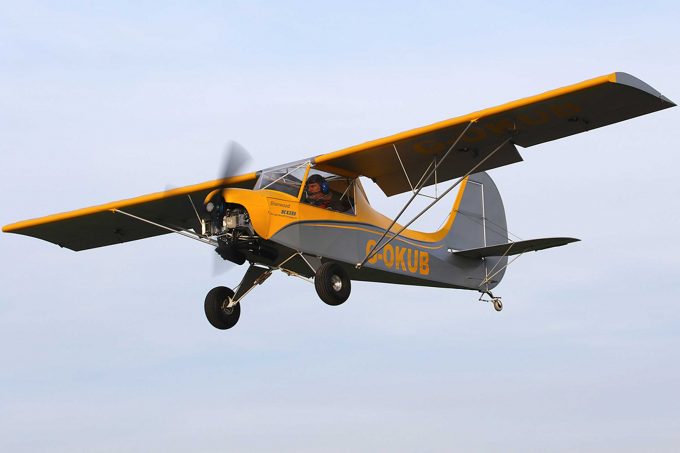
TLAC Sherwood Kub
Built in Norfolk by The Light Aircraft Company, the fun and slightly cheeky-looking Sherwood Kub is a single-seat deregulated aircraft (SSDR) that you can fold up in five minutes and store on a trailer at home.
When you’re ready to fly, just add fuel and take it to the airfield, or maybe to a local friendly farmer’s big field if you’re lucky to know one. Outside of regulation, you’ll just need a microlight licence, medical and insurance to fly it.
Constructed from 4130 Chrome Moly aircraft steel tube and quality aircraft components, the robust little Kub has a maximum take-off weight of up to 300kg.
Power is from a 50hp Hirth two-stroke engine that burns around eight litres of mogas an hour, and you can cruise around 55kt. Take-off and landing roll are 50m.
A good-size cockpit offers the pilot excellent visibility, which is perfect for those fun bimbling flights, hopping from strip to strip.
Basic price for the Kub is £32,500 plus VAT. https://www.g-tlac.com/sherwood-kub/
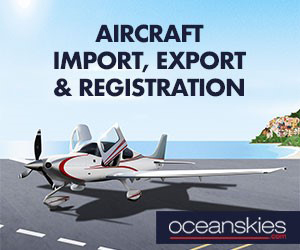
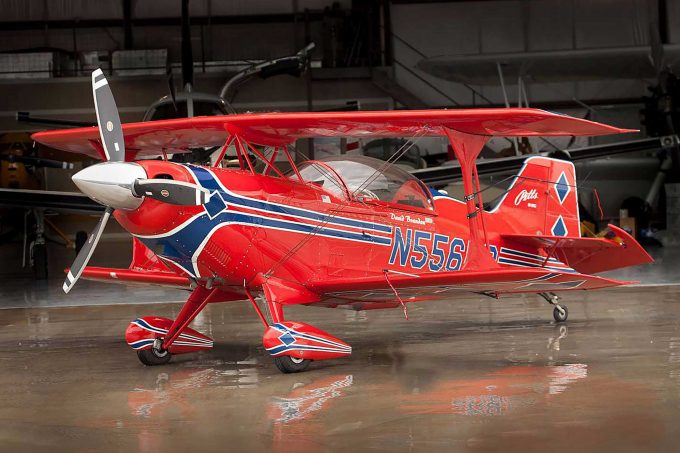
Aviat Aircraft Pitts S-2C
The Pitts Special may no longer represent the absolute pinnacle of unlimited aerobatic competition aircraft but the combination of 260hp, tiny 20ft wings and +6/-5 G limits makes this archetypal aerobatic classic an aeroplane that is still capable of competing at unlimited level, while also being a brilliant aerobatic training platform – thanks to being fully certified and having two seats.
Changes S-2C over the previous ‘B include wingtips, belly and canopy which have increased cruise speed to 150kt, but a Pitts is about so much more than straight and level speed (although I guess even aerobatic display gods need to transit).
Aviat, which manufacturers Pitts aircraft, says its aerobatic ability is also improved with more precise and lighter controls making point rolls even sharper and faster – 300º per second is claimed, i.e., a blur.
With wider track for the main wheels, the S-2C is said to be easier to land and rolls out in a straight line, something that wasn’t always the case with the ‘B. https://aviataircraft.com/aviat-aircraft-pitts/
Close Brothers: experts on aircraft finance
Close Brothers Aviation and Marine has been financing General and Business Aviation in Britain and Ireland since 1976.
We also provide finance for vintage aircraft, and are strong supporters of historic aviation in the UK. The aircraft we finance are usually registered in the UK, USA, Ireland, Isle of Man or Guernsey.
We can finance new aircraft direct from the manufacturer, or pre-owned aircraft being sold by dealers, brokers or via private sale. We can also consider refinancing aircraft that are already owned, to release capital for overhauls, upgrades, rebuilds or other purposes.
The types of aircraft we can help finance include light piston, turboprops, helicopters, business jets and air ambulances.
How does aviation finance work?
- The borrower provides information about themselves and the aircraft.
- We perform an appraisal of the aircraft’s value and undertake our own internal credit analysis.
- We expect the borrower to undertake their own pre-purchase survey of the aircraft.
- We agree terms on the transaction with the borrower.
- We perform a title search based on the aircraft’s registration number to confirm that no liens or title defects are present.
- We then prepare documentation for the transaction, which includes dealing with the vendor, insurers, maintenance organisations and (where applicable) lawyers.
- At closing, the loan documentation is executed, and the funds are transferred.
Why choose Close Brothers Aviation & Marine?
Just as no two businesses are the same, neither are asset finance providers. With us, it’s the combination of our people, products, and principles that make the difference.
Our people are experts in aviation finance This experience means our team really understand the challenges our customers face. You can rely on them to be a consistent and proactive point of contact, on hand throughout the life of the finance contract and beyond, building lasting relationships.
Our products We consider all relevant aspects of your operation and then create tailor-made, flexible repayment schedules to suit. With minimal capital outlay, our asset finance enables you to invest in new aircraft or refinance existing aircraft to make them work harder for you.
Our principles We are committed to helping our customers make the right financial decisions. We base our lending decisions on the overall health and plans for the operation – not just a credit rating. But we’re careful lenders too – a decision that fails to take account of risk factors is not in anyone’s interest.
With local teams throughout the UK and Ireland, we can respond quickly to your requests for information and lending decisions. In fact, we aim to give you a decision within days, sometimes hours.
Aircraft mortgages and registration
Our finance facilities are structured by way of a loan secured by an aircraft mortgage. Security, by way of a mortgage over the aircraft, will be required, together with the appropriate guarantees, and facility fees normally apply.
More information on aircraft and mortgage registration, can be found at:
When lending to companies and limited liability partnerships (LLPs) we register a mortgage with Companies House.
Contact us
For more information visit www.closeaviation.co.uk or call a member of the team on 020 3642 5907.


